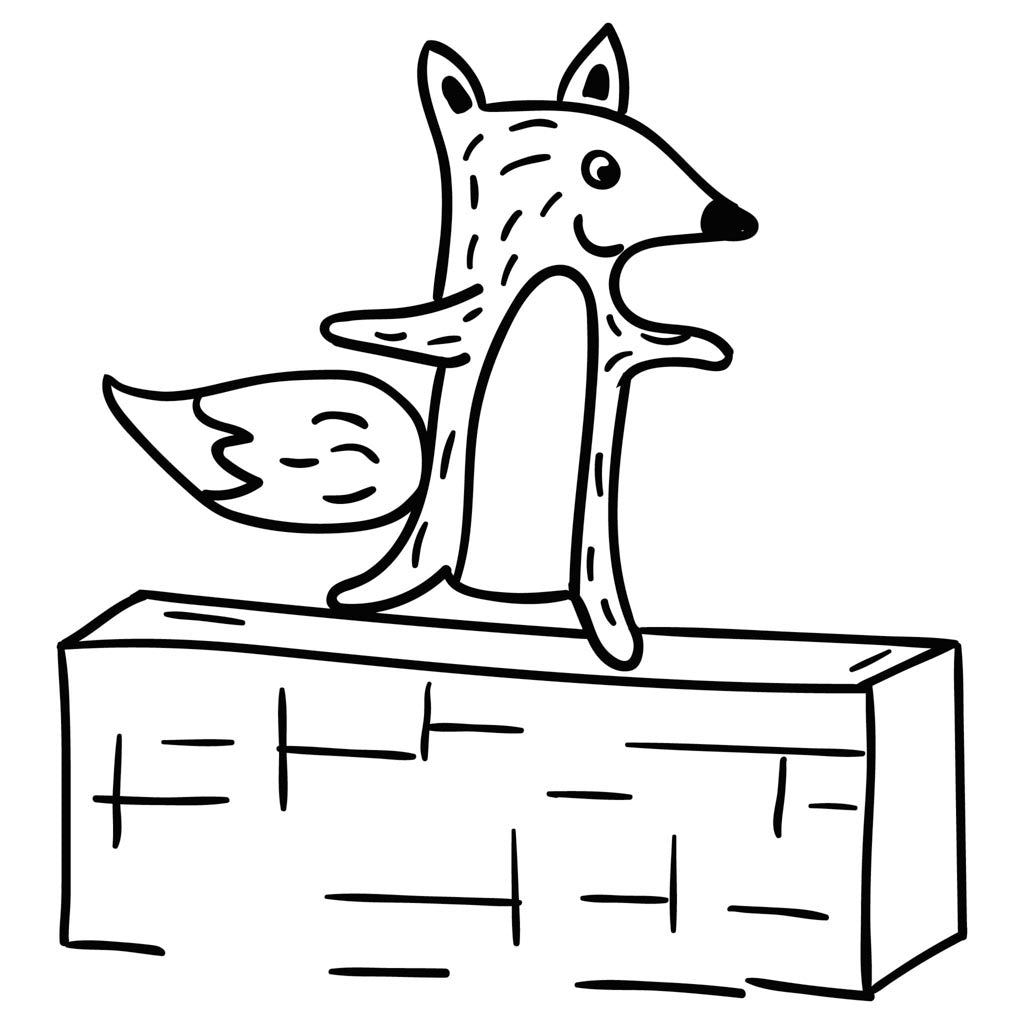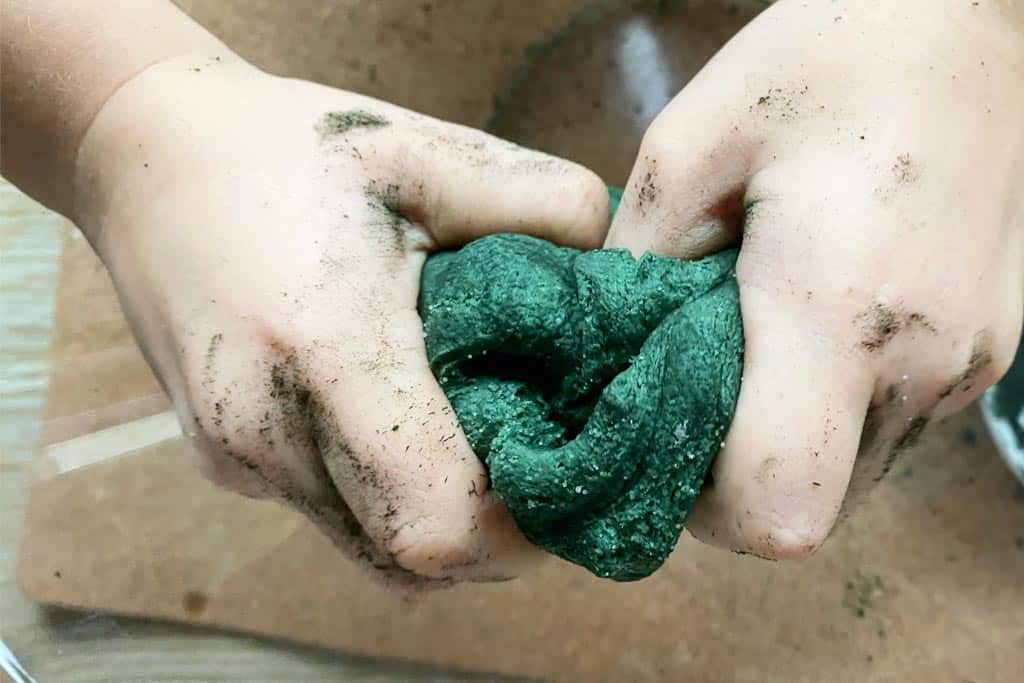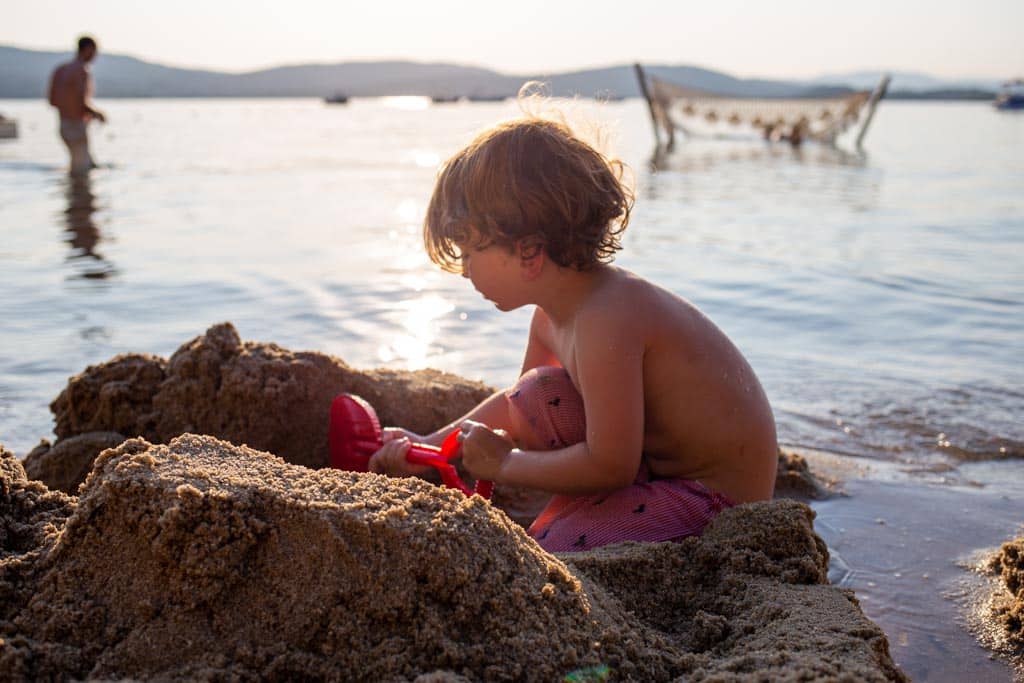You don’t have to spend long online to come across sensory play.
Fill a bowl with slime and plunge your hands into it
Put shaving foam into a tuff spot and draw pictures with your finger
Play with rice using scoops and bowls
Hmm… I thought there was more than one sense. What happened to the other four?
Sensory bins and coloured rice have taken over the world. Or Pinterest, at least…
In fact, there are eight senses. Here are the three you may not know about:
Vestibular sense. This is our sense of balance. We need this for walking and cycling. Our eyes rely on it to help them track words across the page as we read.
Proprioception. The awareness of the position of our bodies in space. Close your eyes and move your arms. You know which way they are pointing even though you can’t see them.
Interoception. The awareness of what is going on inside our bodies. How do you feel right now? Are you hot or cold? Do you need to go to the toilet? This sense is important for potty training!
I talk about schemas a lot, but really they are just one facet of learning. And they come some way down the line.
Before we can learn anything, before we can process information, we have to take it in. Schemas are about organising information once we have received it. What does dropping this rubber egg teach me about bouncing? How does it fit my existing mental model? How is it different to dropping a ball?
But sensory play must come first. It’s about the information that comes in. Do I notice all the relevant features of an object? Do I explore all its characteristics or just some?
If I look at a lemon, all I can ever know about it is that it is yellow and oval shaped. That limits my understanding of what it is and what it can do. But if I smell it, bite it, or listen as it is squeezed, scratched or dropped, I learn so much more. For example, I will discover that it is acidic, and this suggests ways I could use it. Depending on my prior knowledge, I might realise that it can be substituted for lime, or used as a cleaning agent or mixed to make sour drinks.
All this came from exploring with all my senses.
Add a sensory element to your play
If you decide to make a sensory bin, the kind you see all over the internet, don’t make it like this:
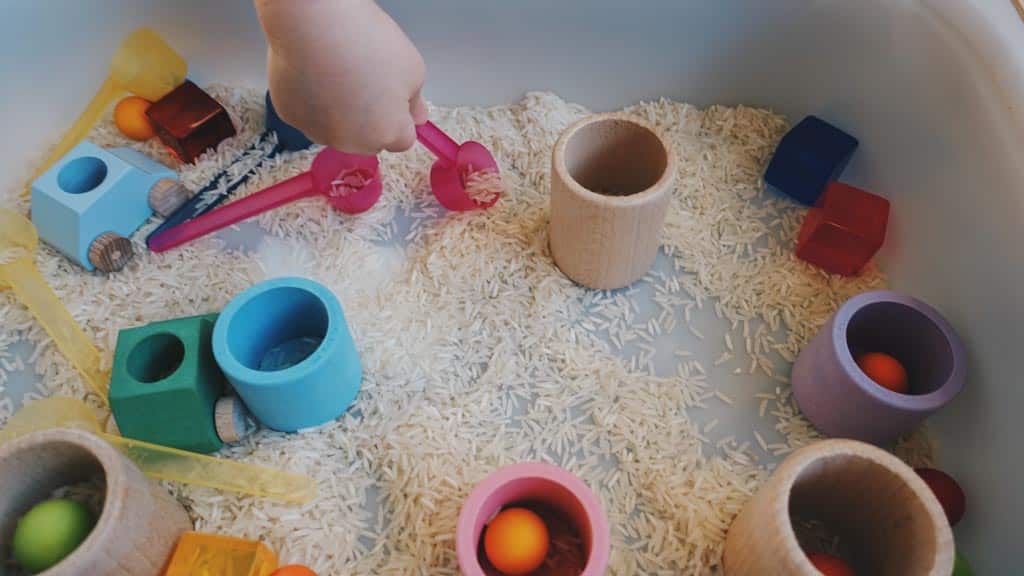
And coloured rice doesn’t count.
What could you add to stimulate other senses?
Could you play with light?
Or smell?
Maybe you could make some DIY playdough using one of these simple recipes? It takes less than two minutes. Be sure to add something to change the texture or smell. Involve your child in the process. The learning is in the making. Let her choose how to modify the dough. Vanilla extract? Lavender oil? Lemon zest? Spirulina powder? Smell them all. Find words to describe fragrance.
And what about the new senses we talked about?
If you’re stuck at home today, how about cushion stepping stones or an obstacle course made from tables and chairs?
Or play blind man’s buff or pin the tail on the donkey?
If you can get outside, find something to balance on or climb.
The more information we have about something, the easier it is to understand. That’s the heart of sensory play. Cornflakes in a tray are fun, but they’re not enough.
For more on this subject, consider A Year With My Child, our toddler course, where we look at this topic in much more depth.
What is sensory play?
Sensory play (sometimes also referred to as messy play – although there is a difference and we’ll come to that shortly) is an approach to learning for the under-fives that comes from a different angle. Young children learn through play, through experimentation and exploration. But indoor lifestyles and clean environments mean children’s senses are not always being used to their full capacity. Sensory play gives the under-fives the opportunity to explore their senses and to learn as they do. Make life interesting and the learning comes naturally.
What are the benefits of sensory play?
Learning is not rigid and one-dimensional. Sights, sounds and smells all contribute to a broader picture of the object being explored. And the more labels our brains can attach to something, the more memorable it becomes.
Sensory play can also help children overcome fears and dislikes. A child who is scared of the bath can find treats hidden in a mountain of bubbles, someone who won’t eat foods in sauces can squelch spaghetti in their fists, a child who is afraid of dogs can stroke different pieces of fur. As they develop an understanding of the textures or smells they fear, the sensory activity builds positive pathways in the brain that let them know there is nothing to be afraid of.
And if you’re looking for mindfulness activities for young children, a bit of sensory play will always be a hit. Sensory activities for toddlers are always powerfully absorbing and allow children to switch off from any noise or distractions that might be going on around them.
Sensory play activities
You don’t always need to do sensory play with jelly or shaving foam. Get outside and simply enjoy nature. Take off your wellies and splash barefoot in a puddle, make mud pies, roll in a pile of crunchy, autumnal leaves of close your eyes and play guess the flower. The best sensory play activities for children encourage them to explore and investigate, observe, form a hypothesis, experiment and make conclusions.
Sadly we can’t always be where the sensory stimulation of the natural world is freely available; trips into nature require time and that many of us don’t have. The good news is it’s easy to provide sensory stimulation at home. The key is to provide sensory play materials and activities that offer a range of possibilities, including smell, sound, sight and texture.
An easy way to provide some pop-up sensory play is to create a designated area (we like to use Tuff Spot trays but it could be a box or the bath or anything you like ) and fill it with whatever you can find that will support sensory play. It’s great to merge this sort of play with small world scenarios, so blocks of ice can become a polar bear’s arctic kingdom, or pebbles and sand can become a mermaid’s underwater playground. Jelly, shaving foam, squelchy food like tinned spaghetti, feathers and fragrant flowers are all fun to experiment with.
Messy play is NOT sensory play
There’s a great deal of overlap between messy play and sensory play but they’re not exactly the same thing.
Messy play allows children to play without limits, to splash and throw, to act without worrying about the clear-up afterwards. Sensory play is generally more contained and focussed. The materials might be similar, but the focus is on exploring unusual textures and sensations.
Messy play can take many forms, and is often spontaneous, so planning for it sometimes goes against the grain. Instead, look out for it and when it happens, try to resist the urge to step in and minimise the mess. Often it involves children getting their hands on something they’d not normally be allowed near or only given under strictly controlled circumstances.
- Get an old roll of wallpaper and unravel it in the garden, hand out squeezy bottles filled with poster paint and take a big step back.
- Leave the sprinkler on and let them turn the lawn into a swamp.
- Take a deep breath and smile as they tip out all the lego into one huge pile on the living room floor and explore the sound and feel of grabbing armfuls of noisy plastic blocks.
What do you have right now in your home that could be used for messy play? You don’t need much space or even a garden. Sit the children in an empty bath, give them each a can of shaving foam and retreat to a safe distance. Brilliant fun, and the perfect antidote to a rainy day stuck indoors.
You’ll find they’re delighted by the sensations and the freedom to get messy without reproach.
Read more about messy play activities.
Best toys for sensory play
Play gyms and activity toys
Try not to overload your infant with sights and sounds that are too bright. In the first few months, even the gentlest tinkle of a bell can be extremely stimulating. Offer interesting but uncomplicated objects. Most well-designed activity toys have simple features like crackle paper, mirrors, bells and soft patches. More than enough sensory fun at this age.
Read more about play gyms and mats.
Fabric
Play peekaboo with your four-month-old by covering her with a silk or other soft piece of fabric or let pull it to her mouth to see how it tastes.
Treasure basket
Fill your basket with objects that are interesting to touch, chew, shake or smell. Think old wallets, rattles and (safely knotted) lavender pouches.
One of the key ideas behind a treasure basket is that a child can return to the same materials day after day, exploring the most interesting objects in greater detail. But changing the contents occasionally is a brilliant way to stimulate new learning. One day try a basket full of objects whose main characteristic is their smell. You are drawing your child’s attention specifically to this sense and helping her to identify differences. Here’s sweet smell, here’s a rubbery one. This one is citrusy.
Read more about treasure basket play.

Play dough
Playdough is one of the classic sensory acitivities. You can find our recipe for home made dough here. Make it more interesting by adding colours, mixing sequins or wooden beads, or perfume into it. Other textural materials include sand and mud, and squidgy foods like tinned tomatoes, icing or marzipan.
Oobleck
Oobleck is crazy! It’s a non-Newtonian fluid, which simply means that it doesn’t behave as you would expect. Pour it like water – so far so good – but squeeze it and it goes as hard as chalk. Follow this simple recipe homemade Oobleck.
Slime
When your child approaches slime for the first time, there can be a great deal of trepidation. I’m not sure I’m going to like this! But if she stays with the sensation and pushes through she will extend her ability to tolerate unusual and unpleasant sensations without becoming overwhelmed. Over time, this makes her more adventurous, her confidence grows, and one day she might happily pick up a spider. Try our simple slime recipe.
Gak
Like slime, Gak is slimy, just a little less so. But what it lacks in goo-factor, it makes up for with springiness. Here’s our Gak recipe.
Final word
If you only remember one thing about sensory play it should be that there are eight senses. Don’t fall into the coloured rice trap – with maybe a few drops of lavender oil.
Make sure you help your child to explore all eight of her senses. It’s not as hard as it seems. Just offer interesting experiences, like a trip to the woods or a paddle in the sea, and remember to take it slowly. Don’t overwhelm your child with too much sensory input all at once. Take your time and enjoy the journey.
Read more about the 8 senses and how you can improve them with sensory play:
- Tactile sense: Messy play
- Auditory sense: Listening activities
- Olfactory sense: Nature walks; discovery bottles
- Proprioceptive sense: Gross motor activities
- Vestibular sense: Balance activities
- Gustatory sense (taste): Cooking activities
- Interoception: Self care
- Visual sense: Painting
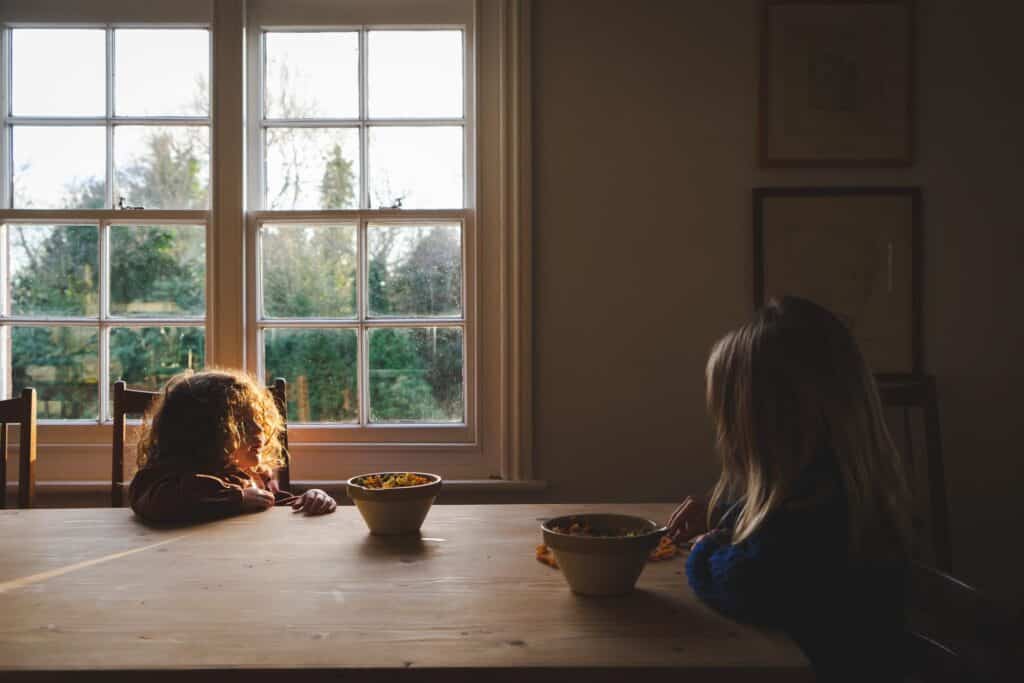
Have you run out of ideas?
What if you didn’t have to trawl the internet for play inspiration? What if your child’s freely-chosen activities were simple to set up, educational and deeply engaging?
How would that change things?
Our courses, A Year With My Child, Get Set Five and 5 Plus are designed for parents of toddlers, preschoolers and the over 5s and they’re packed full of fun and sensible advice.
Enter your email and we’ll send you free modules from each course. And then sit back and relax as your child learns to make her own fun.


